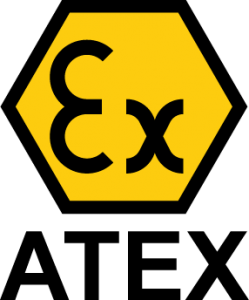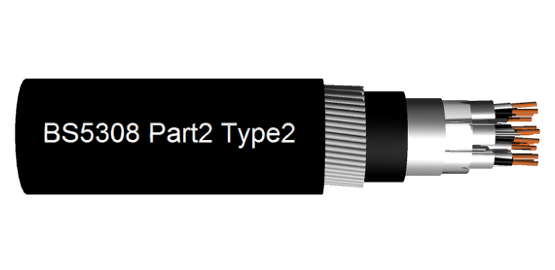Portfolio Details
Product information of the BS5308 Part 2 Type 2
Application
This is an armoured cable and designed to carry communication and control signals in a variety of installations in the petrochemical industry. The cable is designed when a greater degree of mechanical protection is required namely outdoor / exposed or direct burial at suitable depth.
Advantages
- Flexible
- Flame retardant
- Steel Wired Armour (SWA)
Download Datasheets
The difference between the CAM and the ICAM type
The CAM and the ICAM types both have a collective screen. The ICAM type has, as an extra, individual shields for every pair of wires in the cable.
Applicable in ATEX zones

Cables used in ATEX zones need to comply with certain (construction) requirements. The BS5308 Part 2 Type 2 meets these requirements. We will give you two examples. Empty spaces between the cores are not allowed as this makes the transportation of flammable liquids and gasses possible. Therefore, the bedding or the inner sheath of the cable needs to be pressed. Another requirement is that the outer sheath of the cable must be made of an elastomer, a thermoplastic or a thermoset material.
Advantages of the BS5308 Part 2 Type 2
Flexible
The BS5308 Part 2 Type 2 is a flexible cable, ideal for mobile use. This means that the cable can be used several times and can be applied for temporary purposes. In addition, it is easy to handle and pliant making it easy and compact to store. Its flexibility is also an advantage for small-spaced fixed installations as smaller bends can be made. Due to the flexibility of the cable, it is easier and faster to install, which saves more time and reduces costs.
Flame retardant
Cables used to be responsible for spreading fire. The BS5308 Part 2 Type 2 is flame retardant. This means that this cable is designed in a way that it will not spread fire. Cables with these advantages are often used in buildings and at locations where people live, work and travel / move.
Steel Wired Armour (SWA)
A steel wired braiding is often used to armour a cable which needs to maintain its flexibility. This is mainly used for instrumentation and control cables. It also ensures a better mechanical protection of the BS5308 Part 2 Type 2 against sharp objects from the outside.








